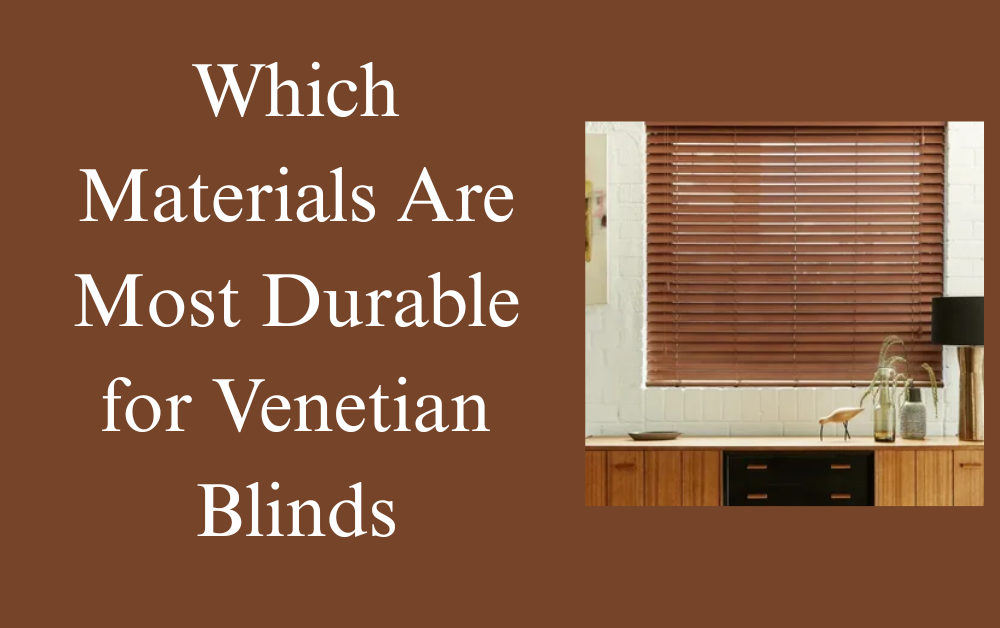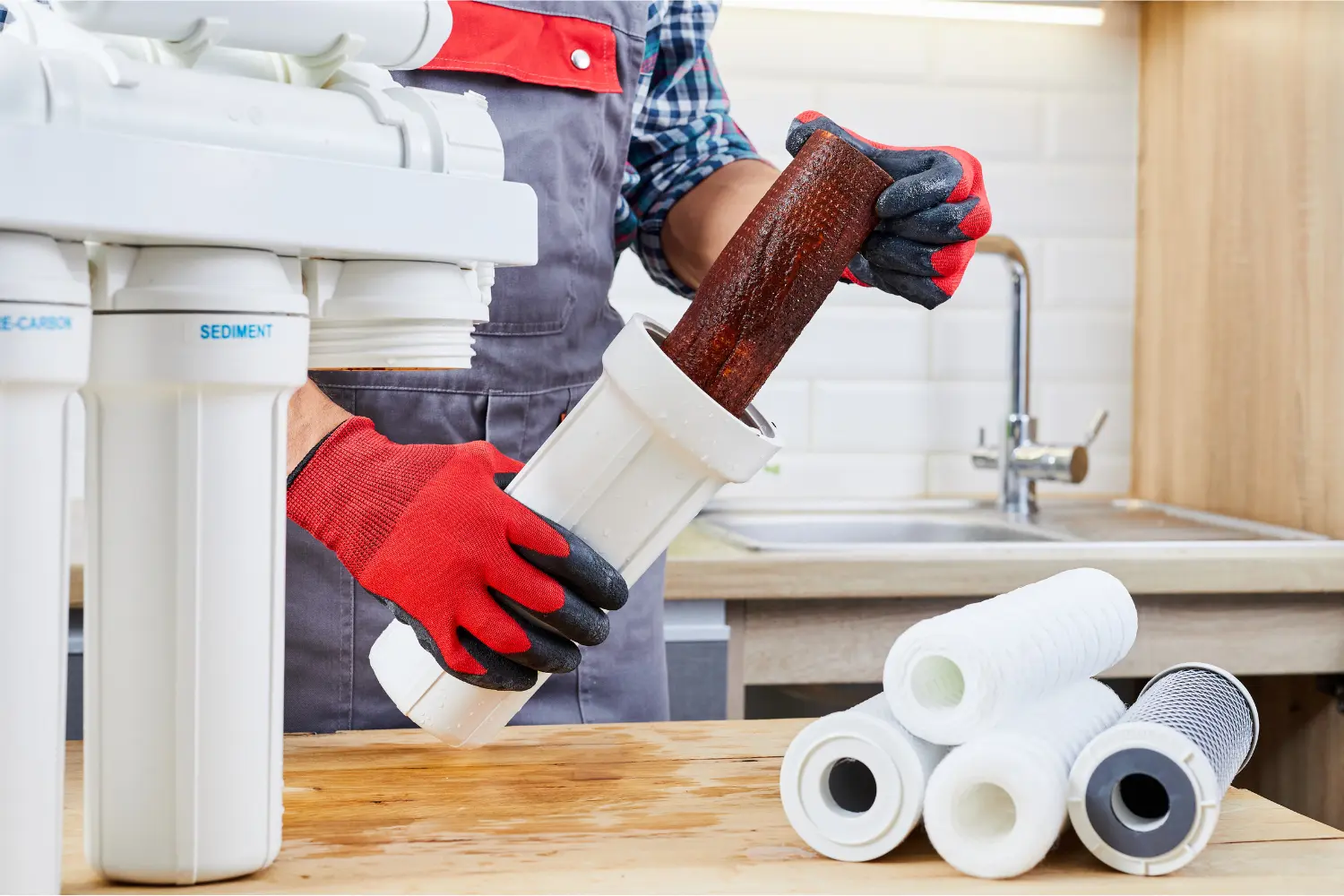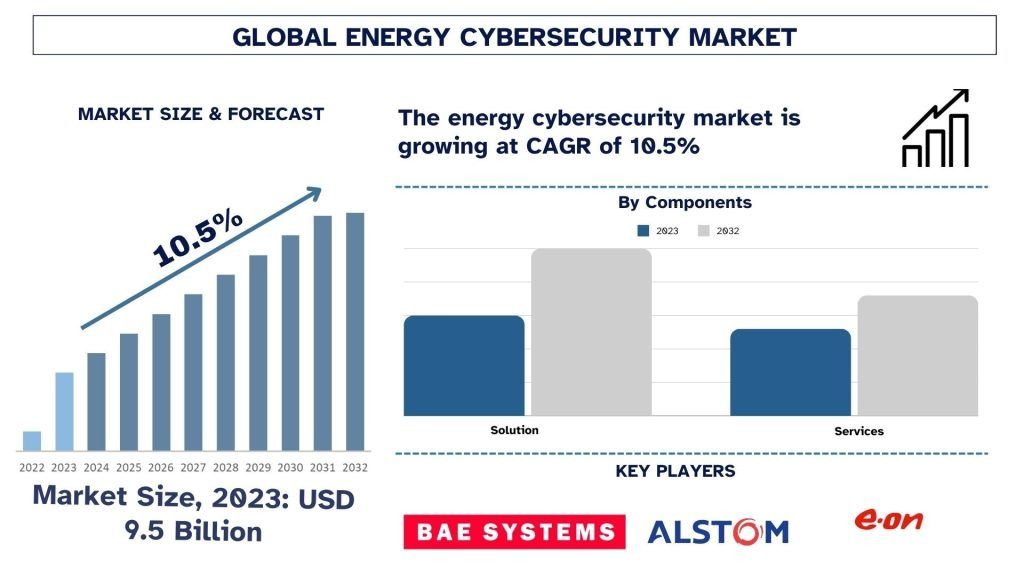Venetian blinds are a popular window covering for homes and offices. They are known for their stylish look and ability to control sunlight. But with so many material choices, one big question comes up: which material is the most durable for Venetian blinds?
In this blog, we will explain the different materials used to make Venetian blinds, talk about how strong and long-lasting they are, and help you choose the best one based on your needs. Whether you want blinds for a sunny room, a kitchen, or an office, this guide will help you understand which material lasts the longest.
Note: Looking for strong and stylish Venetian Blinds in Dubai We’re here to help you choose the perfect material for your home or office. Reach out today to find the best Venetian blinds in Dubai that fit your space, style, and budget. Get in touch now and let’s upgrade your windows the right way
What Are Venetian Blinds?

A Simple Look at What Venetian Blinds Are
Venetian blinds are made of horizontal slats that can be tilted to control light and privacy. You can raise them to let in full sunlight or lower them to block it. They come in different materials, colors, and sizes to match your style and the function of each room.
Why Durability Matters in Venetian Blinds
Choosing Long-Lasting Blinds Saves Money
When you buy blinds, you want them to last for many years. Durable materials are strong, do not break easily, and handle daily use better. If you choose the wrong material, your blinds might crack, fade, or bend over time, and you may need to replace them often.
Main Materials Used for Venetian Blinds
Let’s look at the most common materials used to make Venetian blinds. We’ll talk about their pros, cons, and how long they usually last.
Aluminum Venetian Blinds
A Strong and Lightweight Option
Aluminum is one of the most popular materials used for Venetian blinds. It is lightweight but strong and can last for many years if taken care of.
Benefits of Aluminum Blinds:
- Durable and rust-resistant: Aluminum does not rust easily, making it a good option for humid areas.
- Easy to clean: Just wipe them with a cloth.
- Available in many colors and finishes: You can match them to almost any room.
- Good for blocking sunlight: They reflect sunlight and keep rooms cool.
Downsides of Aluminum Blinds:
- Can bend easily if misused: Although strong, the slats can bend if pressed too hard.
- Noisy in windy or open window conditions: They may make noise when there’s air movement.
Best For:
- Kitchens
- Bathrooms
- Offices
- Rooms with high humidity
Wooden Venetian Blinds
A Natural and Classic Look
Wooden blinds add a warm and natural feeling to any room. They are often made from hardwoods like basswood or oak.
Benefits of Wooden Blinds:
- Very strong and long-lasting: Solid wood blinds can last many years.
- Look elegant and classy: Great for living rooms and bedrooms.
- Help in temperature control: Wood is a good insulator.
Downsides of Wooden Blinds:
- Can warp in high moisture: Not good for kitchens or bathrooms.
- More expensive than other materials.
- Need regular cleaning and care to stay looking new.
Best For:
- Living rooms
- Bedrooms
- Offices with controlled temperature
Faux Wood Venetian Blinds
Looks Like Wood, But More Durable
Faux wood blinds are made from PVC or composite materials but are designed to look like real wood. They are a great option for people who love the wooden look but need something more durable.
Benefits of Faux Wood Blinds:
- Water-resistant and won’t warp: Perfect for bathrooms and kitchens.
- Look similar to real wood: Gives a stylish touch.
- Less expensive than real wood.
- Easy to clean and maintain.
Downsides of Faux Wood Blinds:
- Heavier than real wood or aluminum.
- Can sag on wider windows due to weight.
Best For:
- Kitchens
- Bathrooms
- Homes with kids and pets
PVC (Plastic) Venetian Blinds
Budget-Friendly and Moisture-Resistant
PVC blinds are made from plastic and are often the most affordable option. They are waterproof and easy to clean.
Benefits of PVC Blinds:
- Low cost and easy to find.
- Good for moist areas like bathrooms.
- Come in many colors and patterns.
- Lightweight and simple to use.
Downsides of PVC Blinds:
- Not very strong: They can bend or break more easily.
- May fade or become brittle over time, especially in direct sunlight.
Best For:
- Rental properties
- Budget projects
- Temporary use
Fabric Venetian Blinds (Less Common)
Soft and Stylish Option
While not as common as other types, some Venetian-style blinds come with fabric slats. These give a softer look and are available in many patterns.
Benefits of Fabric Blinds:
- Look soft and unique.
- Many colors and textures.
- Quiet when used.
Downsides of Fabric Blinds:
- Not very durable.
- Harder to clean: Fabric can collect dust or stains.
- Not good for moist or greasy areas.
Best For:
- Bedrooms
- Living rooms with low moisture
Comparison Table for Quick Understanding
| Material | Durability | Moisture-Resistant | Easy to Clean | Cost | Best For |
|---|---|---|---|---|---|
| Aluminum | High | Yes | Yes | Medium | Kitchens, Offices, Bathrooms |
| Wood | High | No | Medium | High | Living Rooms, Bedrooms |
| Faux Wood | Very High | Yes | Yes | Medium | Bathrooms, Kitchens |
| PVC | Medium | Yes | Yes | Low | Budget Homes, Rentals |
| Fabric | Low | No | No | Medium | Bedrooms, Low-Use Areas |
How to Choose the Right Material for Your Needs
Think About the Room Where You Will Use the Blinds
Each room has different needs. Ask yourself these questions before choosing:
1. Is the room humid or dry?
- For humid rooms like kitchens and bathrooms, choose aluminum, faux wood, or PVC.
2. Do you want a natural or modern look?
- For a natural look, go with wood or faux wood.
- For a modern style, aluminum works great.
3. What is your budget?
- If you want something affordable, PVC or aluminum may be best.
- If you are ready to spend more, wood gives a rich appearance.
Consider Maintenance and Cleaning
Some materials need more care than others. If you want something low-maintenance:
- Choose aluminum or faux wood blinds.
- Avoid fabric blinds if you don’t want to do regular dusting or washing.
Which Material Lasts the Longest?
If your main goal is durability, then faux wood blinds usually last the longest. They are:
- Strong
- Moisture-resistant
- Easy to maintain
- Look like real wood without the risk of warping
Aluminum blinds also last a long time, especially if used in the right environment. For a natural look with strength, hardwood blinds are a great option, but they need proper care.
Final Tips Before You Buy Venetian Blinds
Make Sure to Measure Your Window Correctly
Always measure your window before buying blinds. You want a good fit so the blinds work well and look nice.
Think About Safety for Kids and Pets
Choose blinds with cordless options or safety features if you have small children or pets.
Match the Color with Your Room’s Theme
Blinds can change the feel of a room. Pick a color that goes well with your furniture and walls.
Conclusion: Choose the Right Material for Long-Lasting Venetian Blinds
Venetian blinds are more than just window coverings. They can improve how a room looks and feels. But to make the most of your investment, choosing the right material is important.
If you need strong and stylish blinds, go with faux wood or aluminum. For a classic and rich look, choose wood, but be ready to take care of it. If you want something affordable, PVC works well for short-term or budget-friendly needs.
Take your time, think about your room, and pick the material that fits your lifestyle. That way, your Venetian blinds will not only look good—they’ll also last for many years.
For more insightful articles related to this topic, feel free to visit : techners












Leave a Reply